Every industry across the globe has its own set of rules and regulations to ensure the safety of people, the environment, and the equipment being used. These standards are often established by governments, national agencies, international organizations, and industry-specific bodies. Inspections require accurate data to be effective—but obtaining this data can sometimes be challenging. For example, in industries like shipping or energy, assets such as ships, storage tanks, or industrial stacks are difficult to access. This is where drones come into play. They offer a safe and efficient way to reach hard-to-access areas, whether at great heights, in tight spaces, or even underground, allowing for critical data collection that was previously impossible. A UT drone is an unmanned aerial vehicle (UAV) designed to perform ultrasonic thickness (UT) measurements. This technology allows inspectors to gather data from locations that are difficult or dangerous to access, such as chimney stacks, ballast tanks, or flue ducts. These drones are part of drone-enabled non-destructive testing, which helps streamline inspection processes. By using UT drones, companies can reduce risk, save time, and improve efficiency in asset management. The ability to access hard-to-reach areas safely makes them a game-changer in modern industrial inspections. UT drones use ultrasonic testing equipment—such as a probe or gauge—to measure the thickness of materials. The probe sends ultrasonic waves through the material, and the reflection of these waves is measured to determine the thickness. Traditional drones aren’t well-suited for this task because they’re not built to maintain contact with surfaces or hover for long periods. That’s why UT drones are specially designed to operate in harsh environments and provide stable, accurate measurements. Once the drone reaches a measurement point, it places the probe against the surface and applies a couplant solution to enhance sound transmission. The pilot can adjust settings like gain and gates during the process. After the measurement is complete, the drone detaches and moves to the next location. The number of measurements a UT drone can take depends on its flight time, the amount of couplant it carries, and the skill of the operator. For instance, the Elios 3 UT drone can take up to 40 measurements per flight, making it highly efficient for large-scale inspections. UT drones bring numerous advantages to the table, including enhanced safety, improved efficiency, and greater access to hard-to-reach areas. These benefits help reduce costs and improve the overall quality of inspections. Using a UT drone significantly reduces the risk of human exposure to hazardous environments. Inspections in confined spaces or high places often require complex safety procedures. Drones eliminate the need for workers to enter these areas, reducing risks like toxic gas exposure, suffocation, or falls. Some drones can even navigate spaces as small as 50x50 cm (20x20 inches), collecting dozens of measurements per flight. This makes them ideal for environments where human entry is either unsafe or impractical. UT drone inspections are fast and efficient. Unlike traditional methods, which may require scaffolding or rope access, drones can be deployed quickly and fly directly to measurement points. With high-definition cameras and live LiDAR scans, pilots can guide drones beyond the visual line of sight, improving accuracy and speed. Additionally, the data collected by drones is more precise and easier to track. Instead of relying on verbal communication or chalk marks, drones can tag each measurement point and create digital records. This makes it easier to monitor asset conditions over time and identify issues early. UT drones can reach areas that traditional methods cannot. Whether it's inside a stack, within machinery, or in underground spaces, these drones open up new possibilities for non-destructive testing. Some models can even operate without GPS, making them ideal for inspecting confined or remote locations. This increased access means inspections can be conducted more frequently, leading to better maintenance and longer asset lifespans. With less downtime and lower costs, UT drones are becoming an essential tool in modern industrial operations. ⦠How a UT drone saved 15,000 work hours in a ship hull The Elios 3 UT was used for a periodic survey of cargo oil tanks in a medium-sized ship. Each tank required a close visual inspection and UT measurements. Traditionally, this would involve scaffolding and a team of 16+ people. With the Elios 3, all measurements were completed efficiently by the drone alone. An example point cloud with the Elios 3 UT payload with spot measurements located in the point cloud Discover this UT drone for ship surveys. ⦠A UT stack inspection with a drone A stack at a power generation site needed an inspection. The outer insulation made it hard to access, and the location in Northern Canada added weather challenges. The Elios 3 UT drone provided a safe and efficient alternative, flying inside the stack to collect data without removing insulation or using scaffolding. Read the full UT stack inspection case study. ⦠Flue Duct and Silo UT measurements In a cement plant in Germany, an inspection team tested the viability of using a UT drone. They found that the Elios 3 UT could easily inspect flue ducts and silos without the need for scaffolding or disrupting operations. It provided access to areas that were previously difficult to reach. The Elios 3 and UT payload reached inside the flue duct despite dust and the bends in the duct's shape Discover the Elios 3 UT for cement plant inspections. Wrench Tool,Monkey Wrench,Adjustable Wrench,Spanner Wrench CHANGZHOU LVSONG INTERNATIONAL TRADING CO.LTD , https://www.yhyuanhang.comModern Industry and the UT Drone
 Caption: All industries set strict safety protocols. Some sectors, such as shipping, rely on ultrasonic testing equipment to certify the condition of assets.
Caption: All industries set strict safety protocols. Some sectors, such as shipping, rely on ultrasonic testing equipment to certify the condition of assets.What is a UT Drone?
 Caption: The Elios 3, pictured here, is an example of a UT drone.
Caption: The Elios 3, pictured here, is an example of a UT drone.How Does a UT Drone Work?
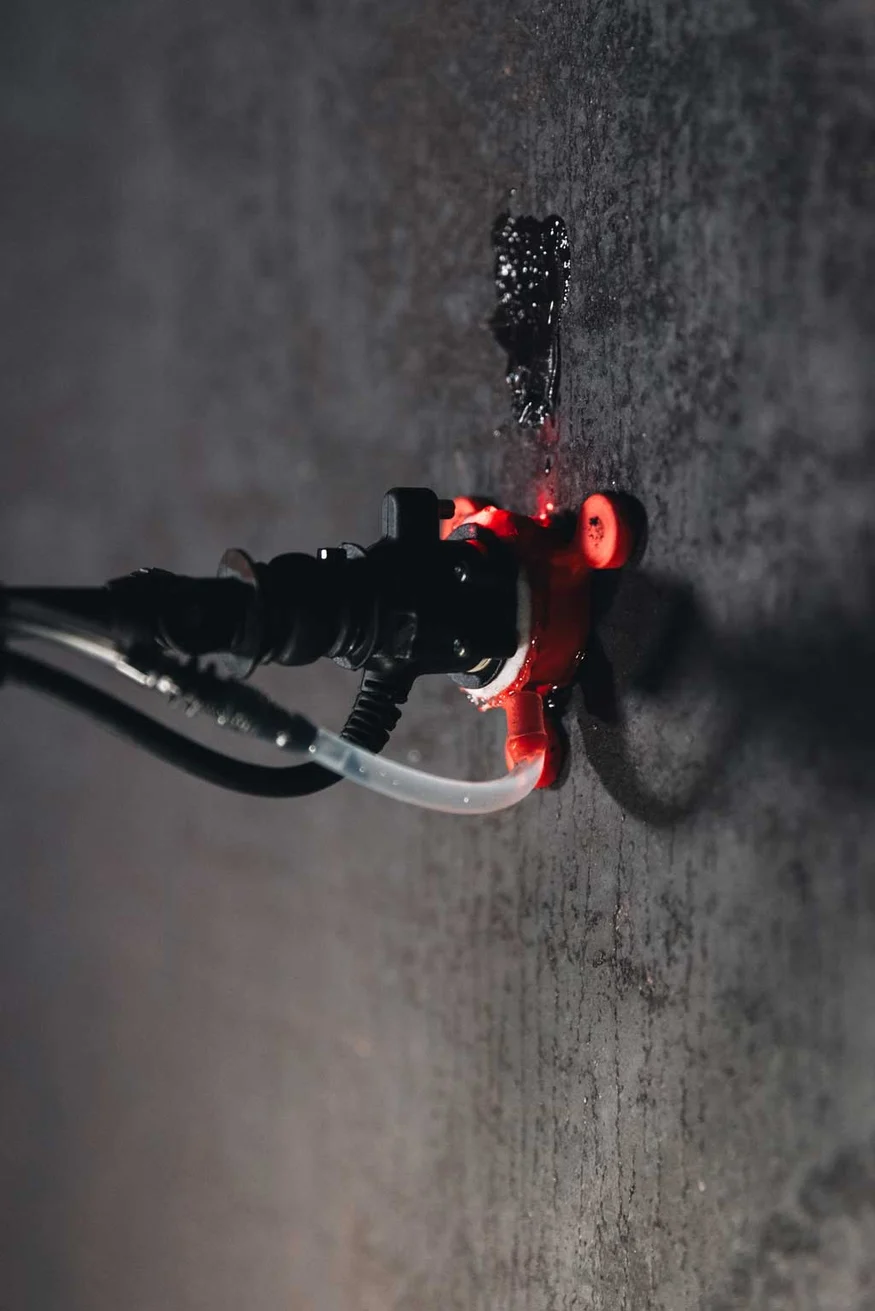 Caption: A UT drone carries a special payload with an ultrasonic thickness measurement probe.
Caption: A UT drone carries a special payload with an ultrasonic thickness measurement probe.How Many Measurements Can a UT Drone Take?
Benefits of a UT Drone
SAFETY
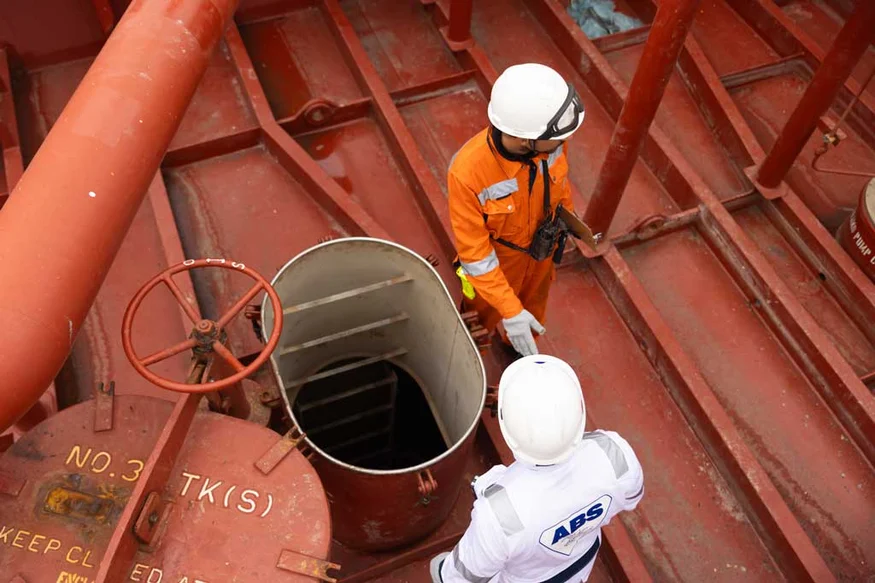 Caption: A UT drone can inspect confined spaces like this tank instead of sending people.
Caption: A UT drone can inspect confined spaces like this tank instead of sending people.EFFICIENCY
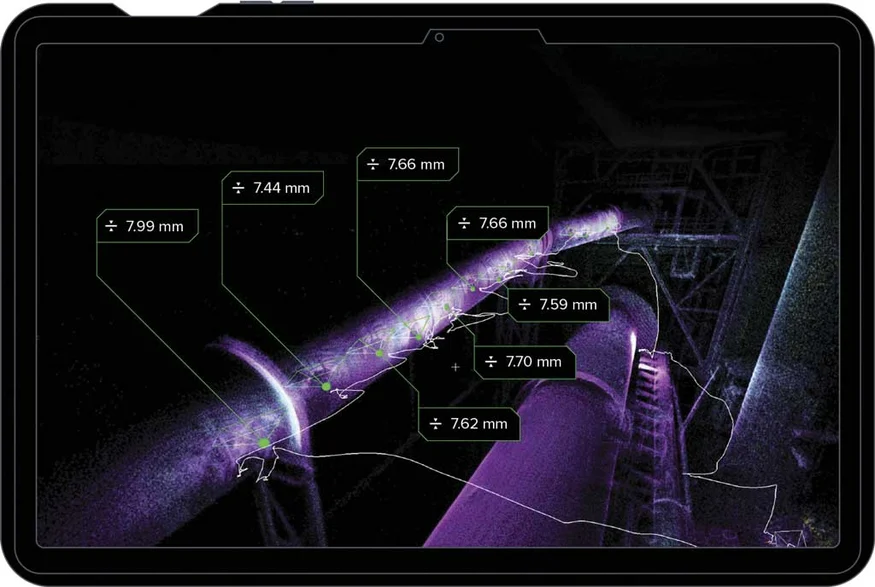 Caption: Here are ultrasonic thickness measurements that have been geotagged by a UT drone during flight.
Caption: Here are ultrasonic thickness measurements that have been geotagged by a UT drone during flight.ACCESS
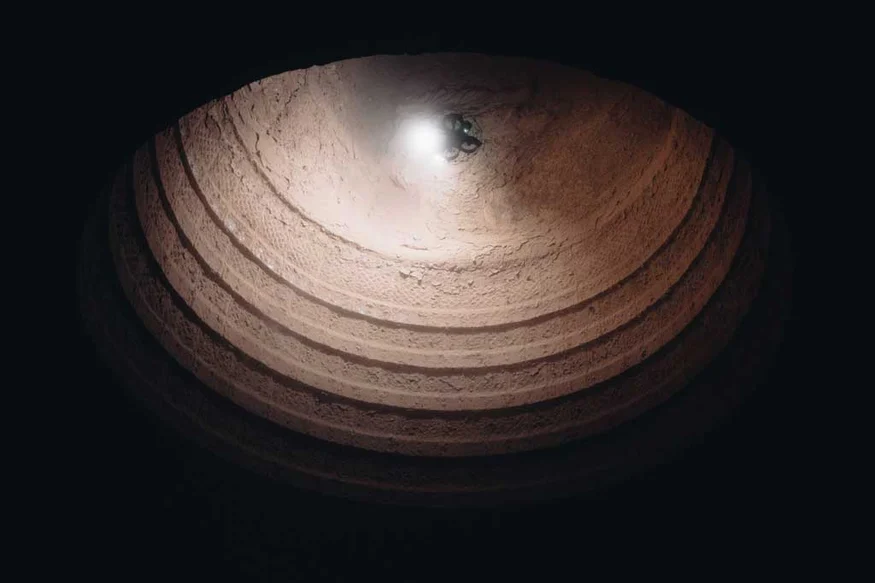 Caption: A UT drone can fly into complex environments and gather critical data that was not available before.
Caption: A UT drone can fly into complex environments and gather critical data that was not available before.UT Drone Case Studies
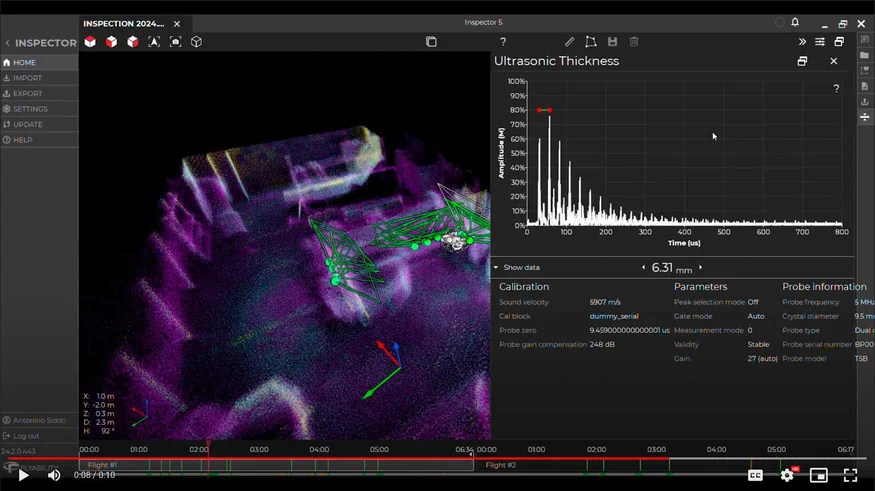
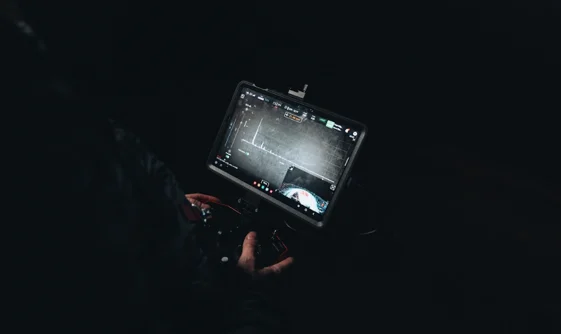 Thanks to the Elios 3's camera, it is possible to complete UT inspections beyond the visual line of sight. The Cockpit app can also be used to manually adjust the gain and gates, as shown on the left side of the screen here.
Thanks to the Elios 3's camera, it is possible to complete UT inspections beyond the visual line of sight. The Cockpit app can also be used to manually adjust the gain and gates, as shown on the left side of the screen here.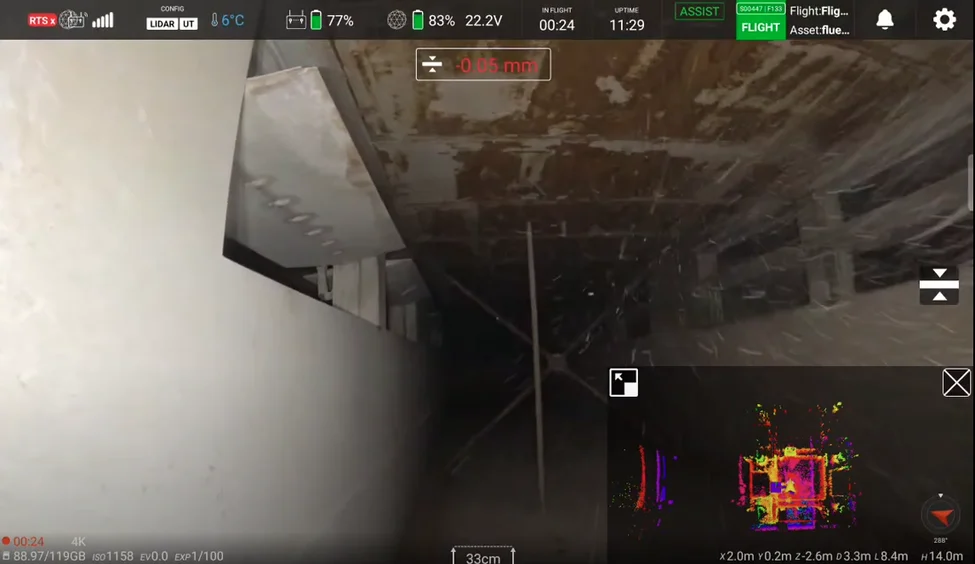
July 14, 2025